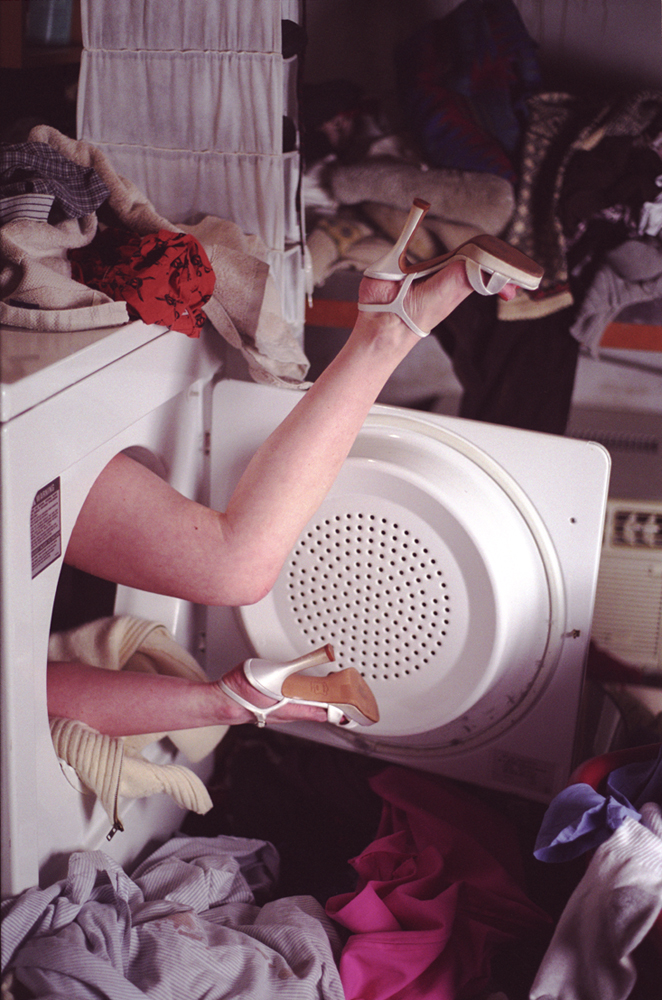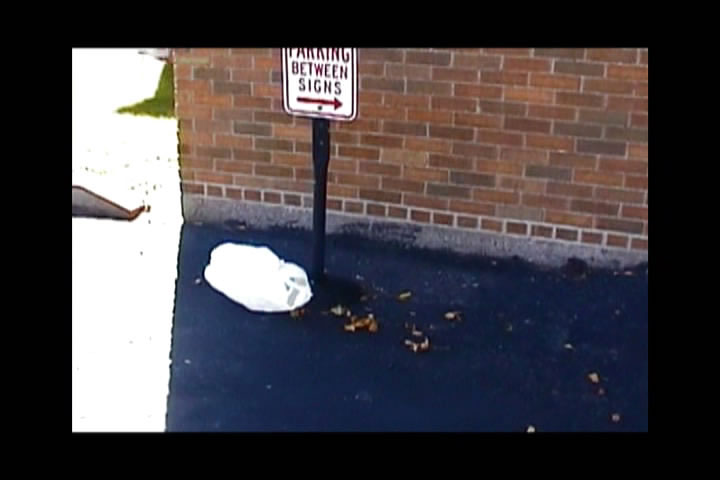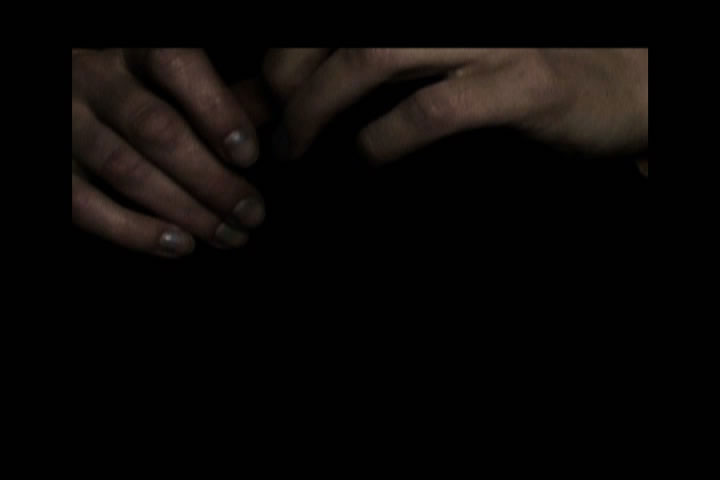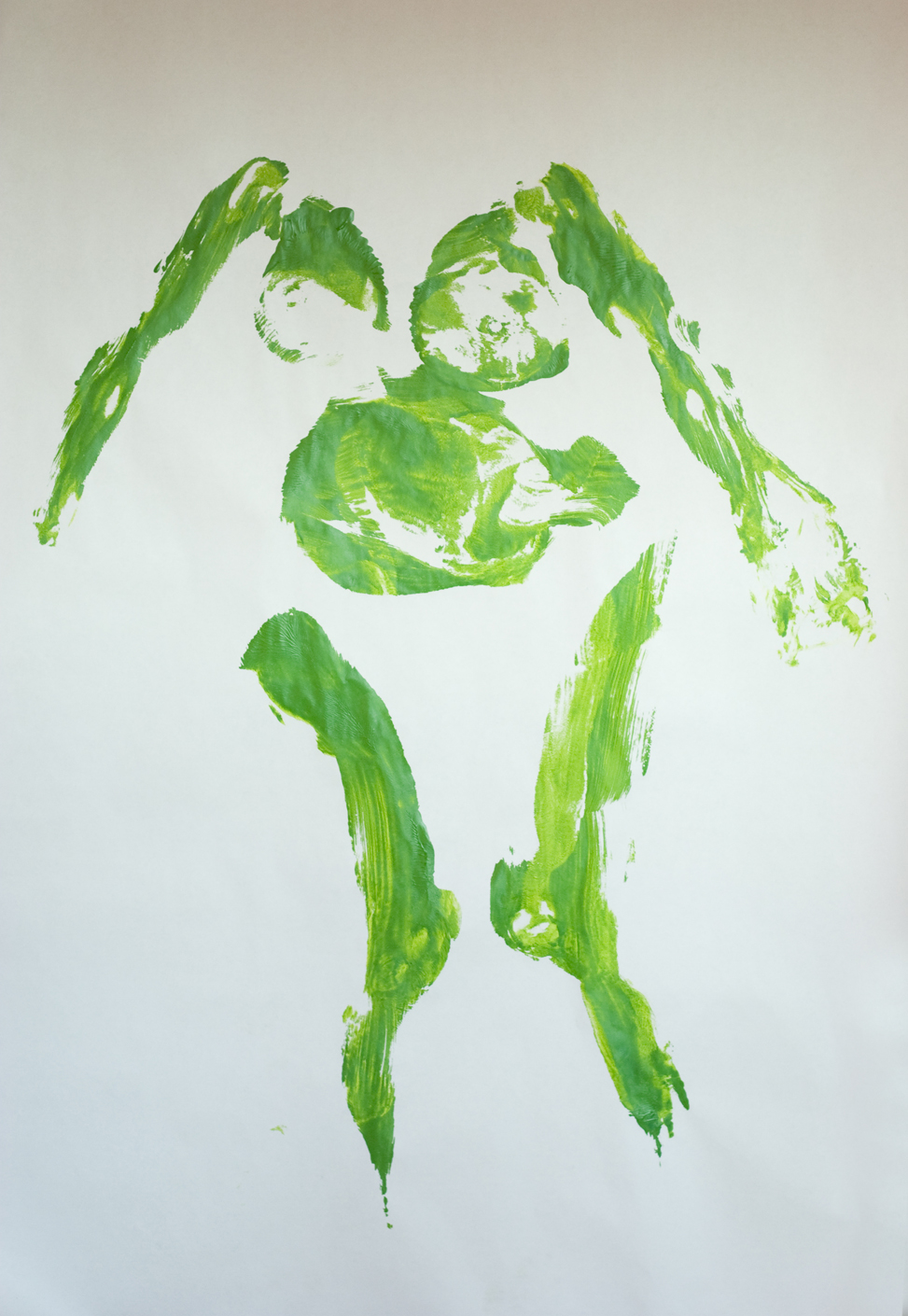Telling Stories from the Inside Out
Andy Sturdevant seeks out Gudrun Lock, an under-the-radar video artist whose work offers a fresh vision on the ties that connect people, places, and stories together.








“WHO IS GUDRUN LOCK?” This unusually existential question fell at the beginning of a short preview I read, this past May, of Minneapolis artist Gudrun Lock’s exhibition, posted on “What’s What,” l’etoile magazine‘s widely read online calendar of upcoming events. It was followed by the somewhat puzzled admission, “We’re not really sure.”
Of course, the existential qualities of the question are mitigated by the fact that the question was not actually rhetorical in nature. Noting a “sparse amount of info on the web” about “this elusive creature,” the writer seemed to genuinely be asking: Who is Gudrun Lock? Really, literally, who is she? Why has she not shown in any of the regular art venues?
Personally, I found the preview’s tone of light bewilderment refreshing. There is not much mystery left in creating and showing artwork in the 21st century; the days of speculations about an artist’s biography based solely on conjecture, hearsay, and the visible evidence of their own work are over. Information on most anyone is readily available and requires very little effort to find. These days, most artists have CVs and statements right on their websites — even if they don’t, a little poking around blogs and online archives will turn up enough for the curious to go on. An artist like Ray Johnson, the semi-famous New Yorker who managed to practice his mail-based artwork with a high degree of anonymity through much of the last half of the century, seems unthinkable today.
This brings us back to the central question l’etoile posed, the question of who Gudrun Lock is. Anonymity, it should be said right away, is not central to Lock’s work as an artist at all. She is, in fact, quite gregarious; she enjoys talking with people and working collaboratively with other artists. In conversation, though, she told me flatly that she didn’t really think of herself as a part of “the art world.” Though she’s worked with many well-known local artists, her practice hasn’t taken her through the usual circuit that most visual artists travel in early- and mid-career.
She has had three exhibitions in the past year, but none of them have been in a conventional gallery setting: one show was in a formerly foreclosed house off of University Avenue during Art-A-Whirl; two others were in Lock’s home, a hundred-year old Sears-Roebuck kit house in Northeast Minneapolis. While Lock is certainly not the only artist in town who is exhibiting work primarily in her own living space, her work is perhaps the most deeply connected to the idea of the home — as a continuum between past and present and between the people who have lived there in the past and herself, living there now. All of these ideas – the house’s memory of its former tenants, the domestic roles and expectations of the homeowner – appear again and again in her work in subtle ways.
______________________________________________________
A person is a product of the time they grew up, Lock points out. Her nomadic upbringing all over the world coupled with the post-’60s hangover that infected much of the 1970s and ’80s left her with a certain cynicism: “All these ideas you grow up with, and think are universal, get thrown at the window.”
______________________________________________________
One can connect a lot of these dots by taking a cursory look at her biography. Lock was born in Berkeley, California to what she describes as “academic hippie” British parents who relocated to Japan when she was two. Japanese, in fact, was the first language she spoke. She spent her childhood all over the world, traveling with her parents wherever their work took them – the streets of Nepal, the Kenyan bush. Her mother was a medical anthropologist, so Lock came into close contact with all kinds of people, many of them poverty-stricken, in the places she lived and visited. Lock’s family eventually settled in Montreal, where she spent much of her teenage years. At the time, this was not the chic, cosmopolitan Montreal of contemporary imagination, but a very conservative, deeply Catholic city in the throes of major cultural upheaval. Throughout the 1960s and ’70s, Quebec was racked by civil disturbances between French and English speakers. Lock and her brother had initially gone to a French language school, but they were hurriedly transferred to an English school after the head priest threatened to cut her brother’s tongue out if he spoke English.
This was an era of smashed windows and of the Quebec Liberation Front.
A person is a product of the time they grew up, Lock points out; the post-’60s hangover that infected much of the 1970s and ’80s, coupled with her experiences overseas, in Montreal, and her upbringing in an academic family, all left her with a certain cynicism. She says, “All these ideas you grow up with, and think are universal, get thrown at the window.”
She studied a little bit of painting and drawing following graduation in Montreal, but she wasn’t really engaged with the practice. So she did what any cynical teenager would do in same circumstances. She deferred college and lit off for Europe.
Lock’s “funny teenage thing” lasted a few years, as she worked her way across Europe waitressing, hitch-hiking, sleeping on couches. She went back to Japan for a bit, and then wound up back in Canada around Montreal, Toronto, and Ottawa. It was at that time that she visited an uncle in Minneapolis and made the decision to move here and re-enroll in college at the University of Minnesota. (What was most surprising to her most about the Midwest, she noted, was the habitually reverent silence of its natives — where she’d grown up, people were dark, thin, short and noisy. Lock relates that she herself felt particularly loud after transplanting here.)
In 1998, she completed her undergraduate degree; but, in conversation, Lock speaks with much more interest about her extracurricular activities and her world travels than her formal academic training. It’s easy to see that she’s been more shaped by these life experiences than by her time in school. It is outside the confines of academia, after all, that an artist finally figures out the approach he or she will take to their practice, how their work will exist outside the academic bubble up against the pressures of career, finances, family, and the million other forces working at cross-purposes with the artist’s intentions.
To this end, it was video that attracted her. Studio practices like painting were too solitary, too unengaged. In conversation, Lock’s liveliest anecdotes refer back to individual people she has encountered in the course of her travels — an Irish truck driver in Europe, an Ainu street artist in Japan who she’d drink with — so her work is, consequently, more informed by such human interactions than anything else. With a secondhand 8mm camera she picked up and some cheap equipment tossed off by others, enlisting friends to help, she began to create work that used formal approaches to color, composition, and texture-all while working out in the world with other people. Her early movies were projected live for audiences in fairly raucous venues like the Loring and the Clown Lounge at the Turf Club. When I asked her if she’d consciously chosen to show in venues that weren’t traditionally visual arts-related, she replied that those were the places she thought art was happening.
Video is a medium that occupies an interesting place in contemporary art. It’s a relatively new medium, and a fairly fluid one – it’s only in the last few decades that the conventions of the form have been solidified in any kind of significant way. The technology changes so fast those conventions scarcely matter, anyhow. The pioneering video work of the 1970s can already seem as brittle and dated as some early silent cinema. Consequently, it’s a more wide-open discipline than almost any other – video can be intimate and one-on-one when viewed on a single screen in darkness, or it can be public and communal when projected for a room of people. It can be narrative in structure, taking cues from traditional cinema, or it can be opaque and formal. The openness of the medium works well for an artist who wishes to draw on varied approaches to putting an idea across for the viewer.
______________________________________________________
Hers is a fly-by-the-seat-of-the-pants approach to art-making — working with people, and making work about people, outside the context of a gallery, stringing together a number of different disciplinary approaches.
______________________________________________________
A series of videos Lock made called Tell Me a Story, for example, begins with off-screen voices doing just that, telling a story, as an image slowly unfolds on-screen. Over the course of the video, the relationship between the two slowly becomes apparent. In one, a woman on the phone who had been raised on a farm relates the story of a beloved but ultimately doomed family pig; as she speaks, an image of a pig’s head hanging from a meathook gradually comes into focus. It’s actually shocking, but quite funny and sad at the same time. The effect is much like that of a particularly good This American Life radio story, augmented visually (and with much more imagination and nuance than TAL itself managed in its recent debut season as a television program).
It was when Lock purchased her house on Quincy Street in Northeast Minneapolis at the beginning of 2008 and made the decision to show there that many of these ideas came together – working with people, and making work about people, outside the context of a gallery, stringing together a number of different disciplinary approaches. Hers is a fly-by-the-seat-of-the-pants approach to art-making. The first such show, last July at her house, pulled together a group of artists – Alexa Horchowski, Janet Lobberecht, and others – who all blurred the lines between their various pieces, and between the exhibition and the house itself.
Before she moved there, Lock’s home had been owned by the same family for several generations, so much of their detritus found its way into the artists’ various pieces – it was all available to use, or not, as needed. Minds could be changed at the last minute. Moreoever, from a practical perspective, having so many artists working side-by-side to put the show together, and paint the walls, and carry out other preparatory tasks collaboratively also meant the household itself was being improved by the communal effort. A co-presenting artist, for example, could take Lock’s new baby for a while so she could finish putting a piece together in the next room.
When Lock talks about her formative experiences in Montreal, she says that as a teenager she’d come to think of the word ‘community’ as carrying the connotation of “wimpy, hippie bullshit;” a mindset that, by the economically-depressed early 1990s, had seemed just a burnt-out facade of hippie idealism. As an adult, she is quick to point out that she can now understand that the social experiments of the 1960s failed for reasons much more complex than simply “hippie bullshit.” ‘Community’ can be understood on both macro and micro levels. Though Lock mentions she would never say that a small house show with friends and peers is the moral equivalent of an attempt to create an overhaul Western civilization, the same impulse may have carried through on some level. Bringing people into your house, having them work on a show, and then presenting to whoever manages to stop in — that also creates community, at least on a micro level.
The work in Lock’s most recent show, while more modest in scope, harkens back to those previous generations of residents who used to live in her house. One of the most striking works on view was also one of the simplest, so simple I initially thought it wasn’t a piece at all. The bathroom was coated in an all-encompassing video projection of hazy static – “snow,” like the kind on your television set; Lock referred to it as “cosmic microwave background.” The piece calls back, of course, to the traditionally feminine discipline of wall-papering, which was used to edify and enrich one’s surroundings in a private family home with pattern, order, and narrative.
______________________________________________________
Who anyone is is largely defined by place and time. These are the things go into one’s art — and whatever is at hand, whoever is around, becomes part of the piece.
______________________________________________________
But standing in a small half-bathroom, surrounded by the visual manifestation of the background radiation that pervades the universe is a strangely expansive experience. Lock explained to me that she had come to understand the traditional domestic use of wallpaper, through her reading and research, as a sentimentalized teaching tool, hung by the women of a house “to be contemplated while waiting for the soup.” In France especially, it depicted narrative scenes of exotic far-off colonies in miniature, telling the mythical stories of French empire. In the same way this traditional type of wallpaper depicted romantic scenes of military campaigns or courtly love, so too did the video wallpaper in the bathroom instruct the viewer in the greatest, most cosmic mythical narrative of them all, the creation of the universe.
At the ephemeral installation in Lock’s home in May, the night’s activities ended with a final piece, fortune cookies for all visitors with blank slips of paper inside. What could it mean? That you make your own fortune? (This is what some of the more excitable children in attendance interpreted.) L’etoile‘s original existential question comes to mind here. Let’s answer the question more generally right now: to a certain extent, who anyone is is largely defined by place and time. These are the things go into one’s art, and whatever is at hand, whoever is around, becomes part of the piece.
By eleven o’clock, the opening was winding down and Lock was in the kitchen with her kids, discussing an upcoming trip to Montreal and seeing the visitors off for the night. People walked out through a colorful paper fishbowl she had created in the enclosed porch by the front door, with their blank fortunes in hand, back onto Quincy Avenue.
About the author: Andy Sturdevant is a writer, curator and artist living in South Minneapolis. His most recent project, with Sergio Vucci, is Common Room, a refurbished office space in The Soap Factory that will host biweekly community arts events throughout August. Also in August, he will be performing a short radio drama with writer Geoff Herbach at the mnartists.org’s Field Day at the Walker Art Center. Find more of his short-form writing here.